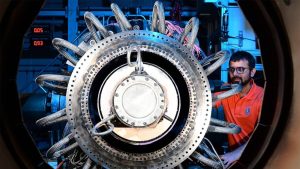FTSE 100 tracker funds have grown in popularity in recent years. These simple investment funds passively mimic the performance of the Footsie while dishing out a second income in the form of dividends.
Alternatively, there are ‘accumulation’ versions with all dividends reinvested in the fund. This would mean going without an income today for a potentially bigger return in future.
Here, I’ll take a look at how much I could expect to receive in dividends from a £20k investment in a FTSE 100 tracker fund that distributes income.
Needles and haystacks
First, I can certainly see the appeal of this style of investing. I get broad exposure to multiple companies — in this case the largest 100 companies listed in the UK — through a single investment.
Moreover, because an index fund basically runs itself, they generally cost very little (certainly compared to active funds). High fees can significantly eat into long-term returns.
John Bogle, the pioneer of passive investing, captured the simplicity of index funds in this timeless quote: “Don’t look for the needle in the haystack. Just buy the haystack.”
The income
So, how much might the haystack pay me? Right now, the dividend yield on FTSE 100 stocks is 3.6%.
But that doesn’t mean I’d get that exact yield because dividends aren’t guaranteed. Companies can cut or cancel their shareholder payouts, while others raise them.
For example, luxury firm Burberry just scrapped its dividend as it deals with slumping sales. Vodafone is due to cut its in half, while Aviva (LSE: AV.) increased its payout by 7.7% last year.
Also, share prices move around a lot, which affects yields due to their inverse relationship. So there’s a fair bit going on.
As things stand though, the FTSE 100 yield is the aforementioned 3.6%, which is broadly what I’d expect from a tracker. So it means I’d be looking to receive about £720 a year in dividends from a £20k investment.
Note that I’ve ignored platform fees and fund costs here.
Forget the haystack
Is that any good? Well, it’s better than a wet crisp packet in the face, as my uncle is fond of saying. But I reckon I can do much better buying individual FTSE 100 stocks.
Returning to Aviva, that stock is yielding 6.5%. That’s not far off double the FTSE 100 average.
Better still, City analysts see the insurer increasing its payouts over the next couple of years. If those forecasts prove correct, then the yield rises to 7.2% in 2024 and 7.8% in 2025.
That would equate to payments of £1,440 and £1,560. A huge difference!
One risk I’d highlight with Aviva is its focus on markets in the UK and Ireland. That might limit growth moving forward, as they’re quite mature markets.
Yet the firm is in great shape financially. In March, its Solvency II capital ratio was a healthy 206%. And it’s buying back £300m of its shares, while its private health business is booming with NHS waiting lists near record highs.
Even so, I’d be reluctant to put £20k into one stock in case the dividend was cut. But there are 30+ FTSE 100 shares currently yielding over 3.6% (some much more). So I don’t really need to buy a tracker as a nice basket can be built by picking individual stocks.
This post was originally published on Motley Fool







